Cir-Q-Lar
Cir-Q-Lar Playing Cards. In 1929 John Waddington Ltd commenced the production of circular cards and these were very popular.
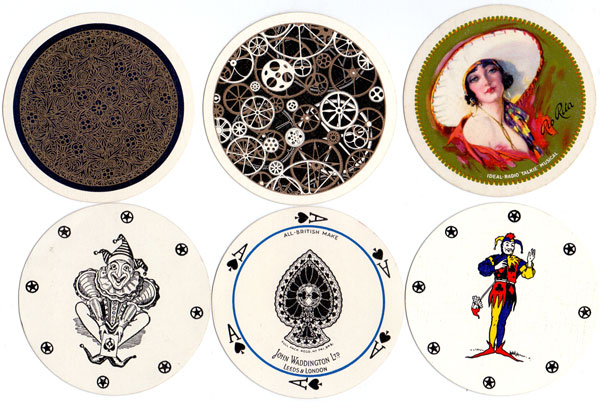
Cir-Q-Lar Playing Cards
Round and oval playing cards were known in Europe as early as the fifteenth century, and examples by the Master ‘PW’ and others survive. These early round cards were finely engraved miniature works of art, with non-standard suit symbols such as flowers or small animals. In India round cards are the normal shape. They are round, painted or lacquered discs of thin wood, cotton fibre paper or ivory which may contain up to eight or ten suits. Round playing cards were also produced in the USA in 1874 by I. N. Richardson and subsequently by The Globe Card Company in 1878. Whilst they were advertised as easier to hold, no corners to break, greater visibility, etc., they never achieved much popularity.
A circular pack was published in Australia in late 19th century titled “Sutherland's Circular Coon Cards”. See more►
In 1929 John Waddington Ltd (Leeds & London) commenced the production of circular cards and these were very popular. They were introduced to the USA where sales were beyond expectations.
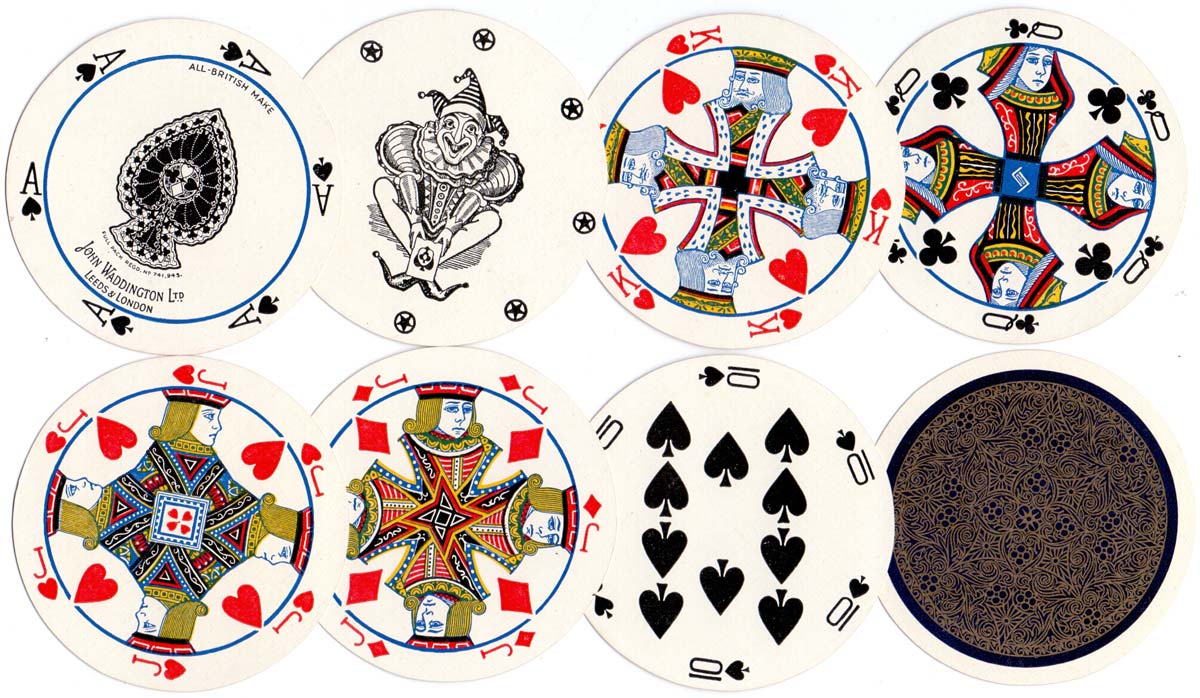
Above: first edition of ‘Cir-Q-Lar’ playing cards manufactured by John Waddington Ltd c.1929. The box refers to Registered No.741-945. (click image to see more)
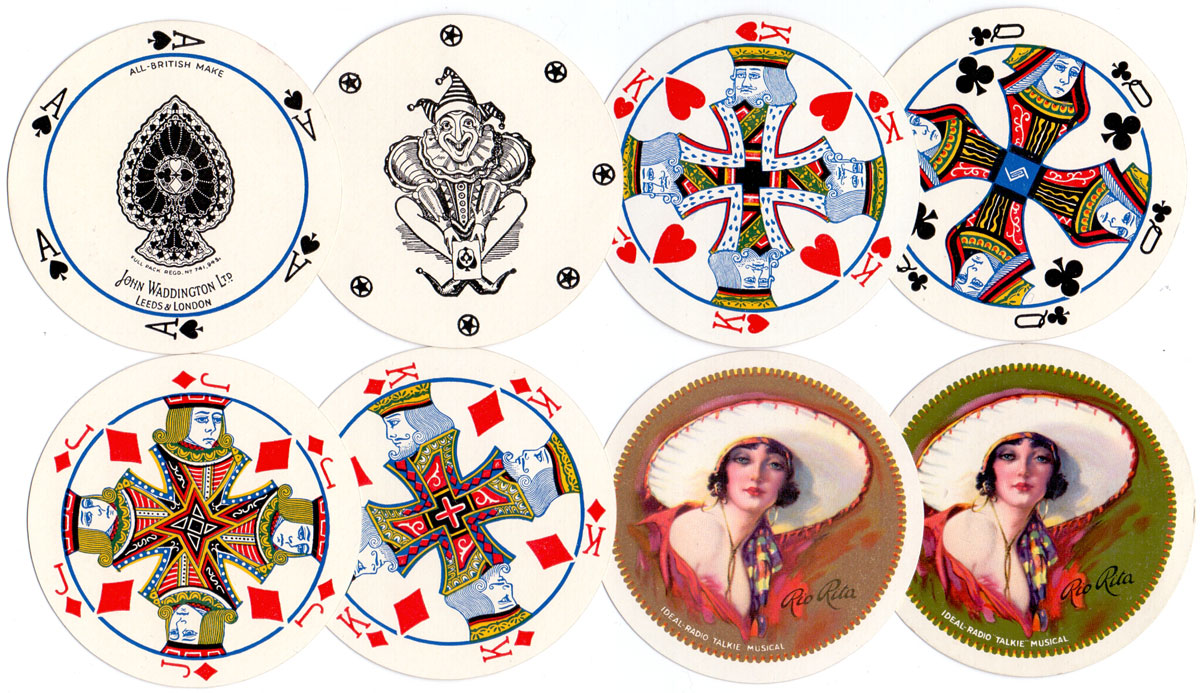
Above: RIO RITA radio talkie-musical double set of ‘Cir-Q-Lar’ playing cards manufactured by John Waddington Ltd in a padded box, c.1929.

Above: ‘Rondo Circular’ playing cards manufactured by John Waddington Ltd. The ace of spades now has a copyright symbol. Image courtesy Matt Probert.
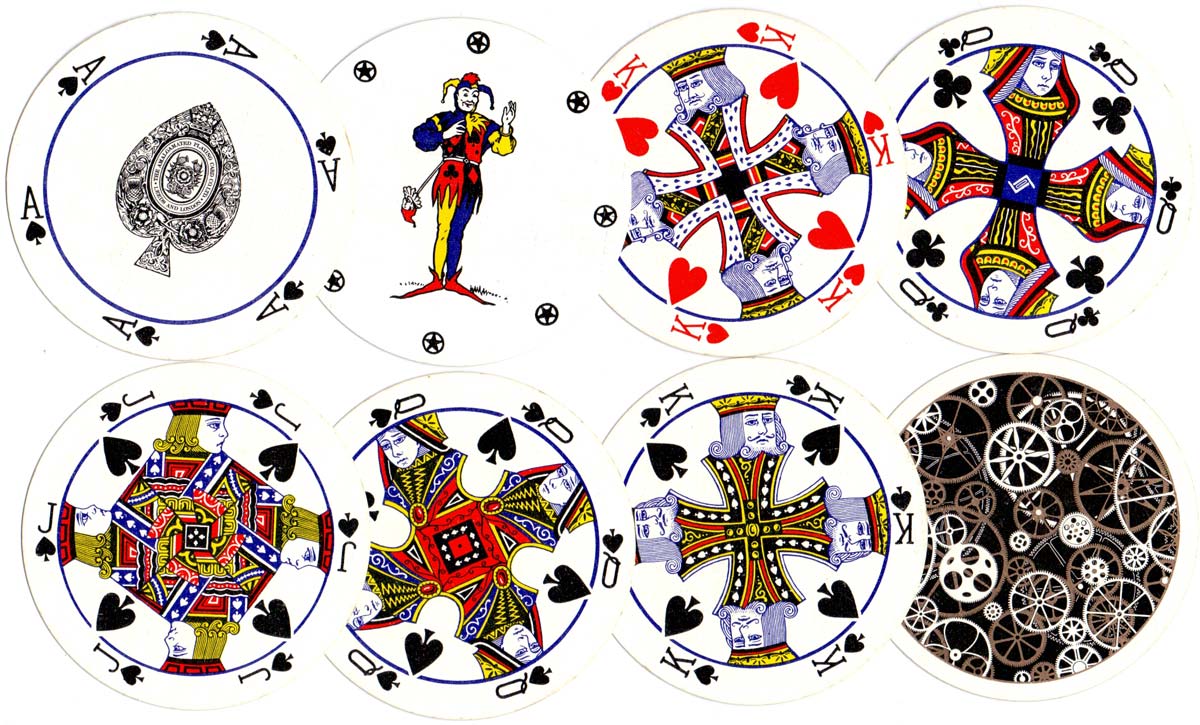
Above: ‘Rondo Circular’ playing cards manufactured by The Amalgamated Playing Card Co., Ltd c.1970. (click image to see more)
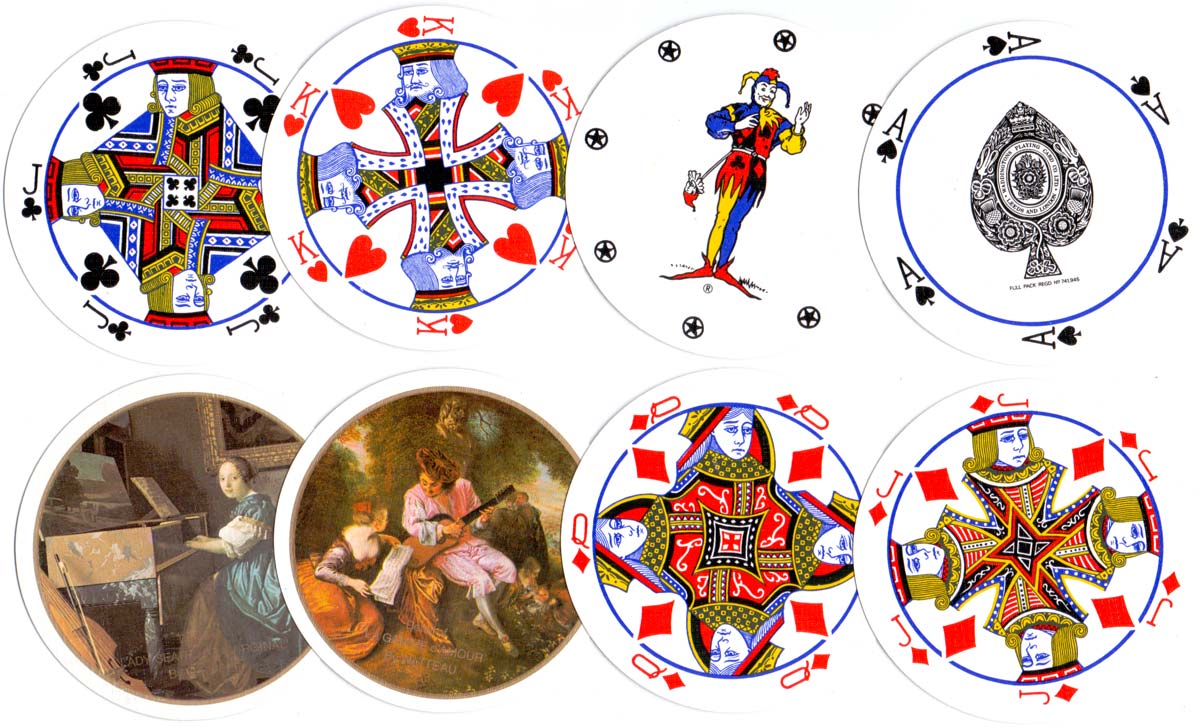
Above: Double boxed set of Waddington's Circular playing cards with details from paintings by Vermeer and Watteau on the reverse, 1980s. (click image to see more)
See also: Sutherland's Circular Coon Cards • Master PW Circular Playing Cards • VelCap Circular Playing Cards.

By Simon Wintle
Member since February 01, 1996
Founder and editor of the World of Playing Cards since 1996. He is a former committee member of the IPCS and was graphics editor of The Playing-Card journal for many years. He has lived at various times in Chile, England and Wales and is currently living in Extremadura, Spain. Simon's first limited edition pack of playing cards was a replica of a seventeenth century traditional English pack, which he produced from woodblocks and stencils.
Related Articles

Victorian grocer’s scale plate
Large flat plate decorated with highly coloured English cards and royal arms.

Queen of Arts
A wide variety of women artists celebrated on cards with illustrations by Laura Callaghan.

The Glasgow Pack
Issued to celebrate Glasgow’s reign as European City of Culture in 1990, with city views and works o...

Cathedrals, Abbeys & Minsters playing cards
54 pictures of different famous cathedrals, abbeys and minsters in England and Wales.

Christmas Carols
Christmas Carols playing cards illustrated by Stuart Dilks

Pam is the Knave of Clubs
Playing cards as metaphors in 18th century art - from fate, chance and social hierarchy t...

Question and Answer Games
A card game called “Impertinent Questions and Pertinent Answers” was launched in the early 1920s by ...

Dr Sacheverell
Dr. Henry Sacheverell's impeachment in 1710 sparked widespread public unrest and political upheaval,...

Leadmill playing cards
Promotional pack for an arts centre in Sheffield with designs by Martin F. Bedford.

Agatha Christie and card games
Agatha Christie uses card-play as a primary focus of a story, and as a way of creating plots and mot...

English Heritage
52 different colour photos of historic sites managed by English Heritage.

The Malt Whiskies of Scotland
Three packs featuring photographs by Duncan McEwan of malt whisky distilleries in Scotland.

Typographic Playing Cards
Typographic Playing Cards designed by Jim Sutherland, c.2010.

76: Transitions: Hunt & Sons
Styles change and technology develops. This means that it's possible to see transition periods in th...

Gibson’s History of England
History without tears for young and old, 1920s.

Simpson (Piccadilly) playing cards
Innovative advertising pack for Simpsons of Piccadilly designed by André François.
Trending Articles
Popular articles from the past 28 days


